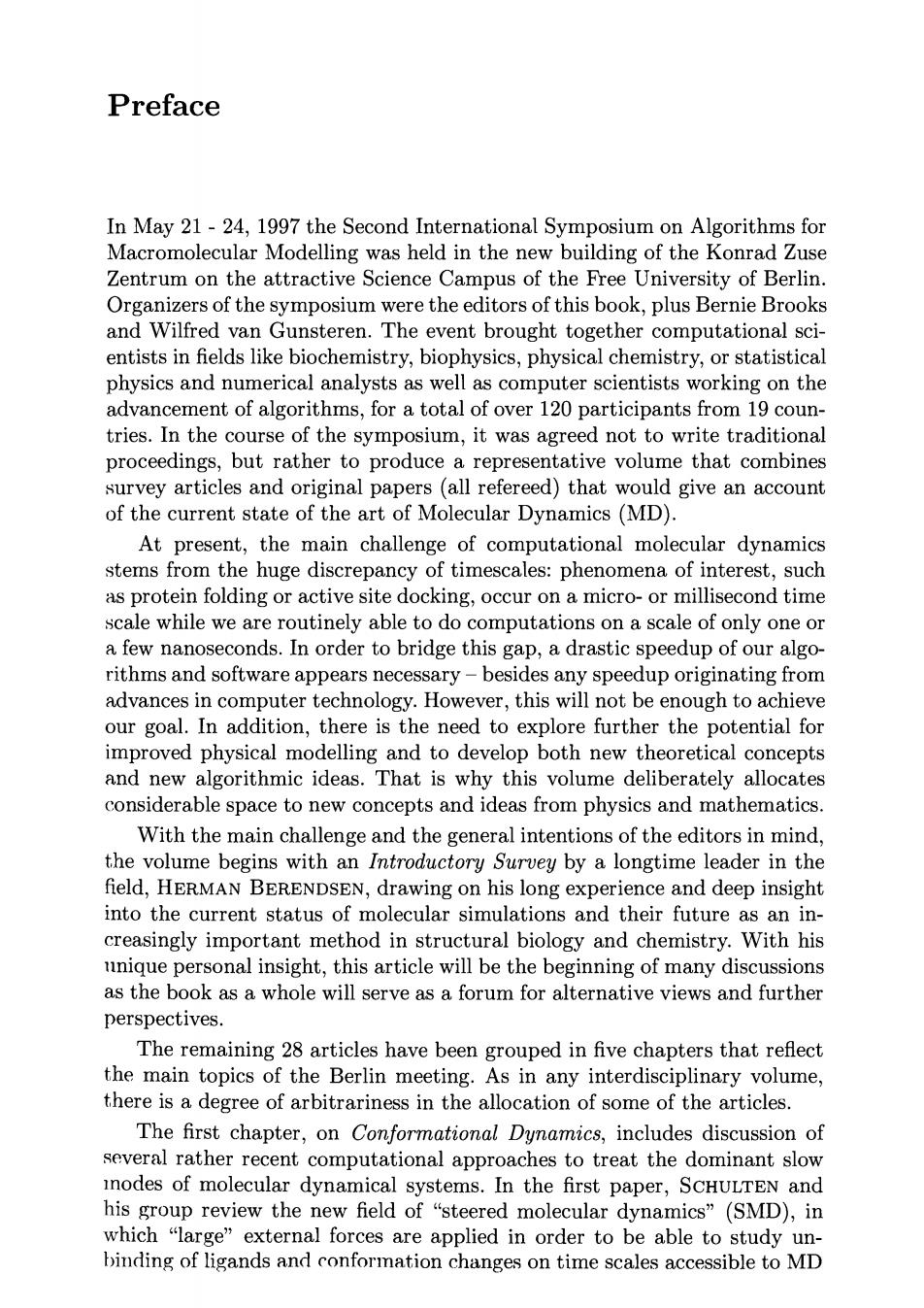正在加载图片...

Preface In May 21-24,1997 the Second International Symposium on Algorithms for Macromolecular Modelling was held in the new building of the Konrad Zuse Zentrum on the attractive Science Campus of the Free University of Berlin. Organizers of the symposium were the editors of this book,plus Bernie Brooks and Wilfred van Gunsteren.The event brought together computational sci- entists in fields like biochemistry,biophysics,physical chemistry,or statistical physics and numerical analysts as well as computer scientists working on the advancement of algorithms,for a total of over 120 participants from 19 coun- tries.In the course of the symposium,it was agreed not to write traditional proceedings,but rather to produce a representative volume that combines survey articles and original papers (all refereed)that would give an account of the current state of the art of Molecular Dynamics(MD). At present,the main challenge of computational molecular dynamics stems from the huge discrepancy of timescales:phenomena of interest,such as protein folding or active site docking,occur on a micro-or millisecond time scale while we are routinely able to do computations on a scale of only one or a few nanoseconds.In order to bridge this gap,a drastic speedup of our algo- rithms and software appears necessary-besides any speedup originating from advances in computer technology.However,this will not be enough to achieve our goal.In addition,there is the need to explore further the potential for improved physical modelling and to develop both new theoretical concepts and new algorithmic ideas.That is why this volume deliberately allocates considerable space to new concepts and ideas from physics and mathematics. With the main challenge and the general intentions of the editors in mind, the volume begins with an Introductory Survey by a longtime leader in the field,HERMAN BERENDSEN,drawing on his long experience and deep insight into the current status of molecular simulations and their future as an in- creasingly important method in structural biology and chemistry.With his unique personal insight,this article will be the beginning of many discussions as the book as a whole will serve as a forum for alternative views and further perspectives. The remaining 28 articles have been grouped in five chapters that reflect the main topics of the Berlin meeting.As in any interdisciplinary volume, there is a degree of arbitrariness in the allocation of some of the articles. The first chapter,on Conformational Dynamics,includes discussion of several rather recent computational approaches to treat the dominant slow inodes of molecular dynamical systems.In the first paper,SCHULTEN and his group review the new field of "steered molecular dynamics"(SMD),in which "large"external forces are applied in order to be able to study un- binding of ligands and conformation changes on time scales accessible to MD